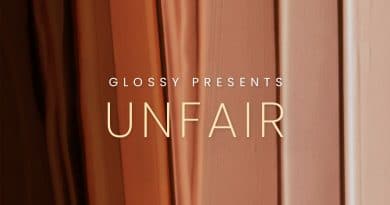Greg Lauren and Gee’s Bend Quilters Take Aim at Cultural Appropriation – WWD
Ralph Lauren may have built an apparel empire out of romantic interpretations of Americana, but his nephew Greg Lauren is giving credit to authentic American creators with a new collaboration with the quilters of Gee’s Bend.
Debuting at Bergdorf Goodman today, the textiles for the pieces were created by 14 quilters from the rural Alabama community of Black artists who trace their history — and craft — back to the enslaved people of Pettway Plantation. The Mosaic: Gee’s Bend & Greg Lauren collection uses scraps of fabric from the designer’s archive as a way of acknowledging what his brand’s signature sustainable “GL Scraps” scrap work technique owes to artisans who came before him, including those in Gee’s Bend.
“In the past year, through conversations and a willingness to learn, I realized I had an opportunity to use my platform and brand to change what has often been the exploitative nature of fashion,” said Lauren.
“I like the recognition we’re getting…Greg is giving us the credit,” said Mary Margaret Pettway. The Gee’s Bend point person on the project, Pettway started quilting at age 11, and her mother’s work was in the landmark 2002 exhibition “The Quilts of Gee’s Bend” at the Whitney Museum in New York.
The quilters of Gee’s Bend.
Stacey K Allen/Courtesy of Gee’s Bend
Lauren got his start as a fine artist challenging romantic archetypes through the materials he used. An art show in Los Angeles in 2010 featured suits made of crumpled paper. He launched his ready-to-wear collection in 2011, focusing on handmade and artisanal West Coast slouch wear for the creative class, which was in some ways a reaction to his family’s brand of East Coast perfection.
“I have always been intrigued by deconstructing the concept of Americana…and helping to shed light on a more truthful version of it in the context of art, fashion and style…,” he said.
That more truthful version now includes quilting, a mainstay of Americana that has become a fashionable technique in recent seasons with labels large (Chloé) and small (Bode), thanks to its association with upcycling and sustainability.
“Before quilting became popular, it was a lost art pretty much because we’re losing so many traditional things we used to do just to make do,” explained Pettway.
The quilters of Gee’s Bend.
Stacey K Allen/Courtesy of Gee’s Bend
Like many, Lauren was first exposed to quilts as an aesthetic, when he began researching them for a 2018 collection. “I Googled quilts, saw geometric red and white images, screen-shot them and up they went on the mood board,” he said.
Not until deeper exploration, prompted in part by the Black Lives Matter protests, did he realize what he was looking at was from Gee’s Bend, which he name checked in his 2021 collection, with a portion of proceeds going to the Souls Grown Deep Foundation to preserve and promote Black artwork in the South.
While designers are called out regularly by social media sites for cultural appropriation (including recently, the New York brand SEA, for using Hawaiian quilting without giving credit), Lauren said this collaboration was not a response to any call-out, but more about personal introspection. (No doubt, it is also a next-gen response to his Uncle Ralph and others appropriating Native American imagery and textiles, among other things.)
“I don’t want to indict other designers,” he said when asked about that. “I believe in approaching our relationships with other communities, with marginalized communities, in a more responsible way than it’s been done before. With this we set out to create a proper model through which creatives should and can collaborate with artists and artistic communities, and one that is about volition and consent.”
A sketch for a coat from the Mosaic: Gee’s Bend and Greg Lauren collection.
Greg Lauren/Courtesy of Gee’s Bend
Lauren worked with Souls Grown Deep and with apparel industry innovator Nest to make contact with Gee’s Bend and forge a relationship. Then he set up a Zoom conversation with the quilters to see if they were interested in making panels using fabric Lauren provided, knowing that the panels would become garments.
“So there would be a clear idea of what their work would be used for. That was important for me because creatives and designers for a long time have used others’ work, especially when the work is relegated to folk art or found art or a vintage piece,” he said. “Whether something was created by a known celebrated artist or not, a person used their ingenious artistic ability to put two colors next to each other, to choose fabrics, to stitch, to create the emotional response for those who see it. That has to be recognized and appreciated.”
Each quilter came back with choices of fabric, and was sent a quilting kit with yardage and bins of scraps, from tweeds to men’s wear suiting to nylon to denim and workwear.
Pettway communicated that the community wanted not only recognition, but compensation and financial participation in the final product. So they were compensated first for the panels. All of the profits from sales of the collection will also go back to Gee’s Bend. Lauren asked Bergdorf Goodman to place a proper order of pieces, and 10 percent of their profits will also go to the community.
“Proper and equitable collaborations are not easy, and they don’t necessarily make financial sense to a company, but you have to do it to create a better model,” said Lauren, explaining that the quilters were also involved in giving feedback on how the 276 panels were used.
A coat from the Mosaic: Gee’s Bend and Greg Lauren collection.
Menelik Puryear/Courtesy of Gee’s Bend
The resulting 93 garments, priced commensurate to the artwork at $5,000 to $10,000, will be in the Bergdorf Goodman men’s store through Nov. 8. “Combining brown and cream herringbone and houndstooth with orange twills and nylons and bold blue linens, it’s incredible. They opened my eyes to textiles I’ve known my entire life,” said Lauren.
The immersive installation features the quilters’ portraits, their voices in recordings where they discuss the process, and editorial-style collection images shot in L.A. with input from Pettway on casting and styling. “She’s the most authentic person and creative I’ve worked with,” the designer added. “We had fun,” she laughed.
Each piece has the quilter’s signature on the outside, and bio stitched into the lining. “That to me is what this is about,” said Lauren, who plans to continue the collaboration and hopes it sparks others to tap into the community’s skills. “We can talk about appropriation and what has been done, but what is exciting to me is what’s being done.”
Mary Margaret Pettway, left; Greg Lauren, center, and a model wearing the Mosaic: Gee’s Bend and Greg Lauren collection.
Menelik Puryear/Courtesy of Gee’s Bend







